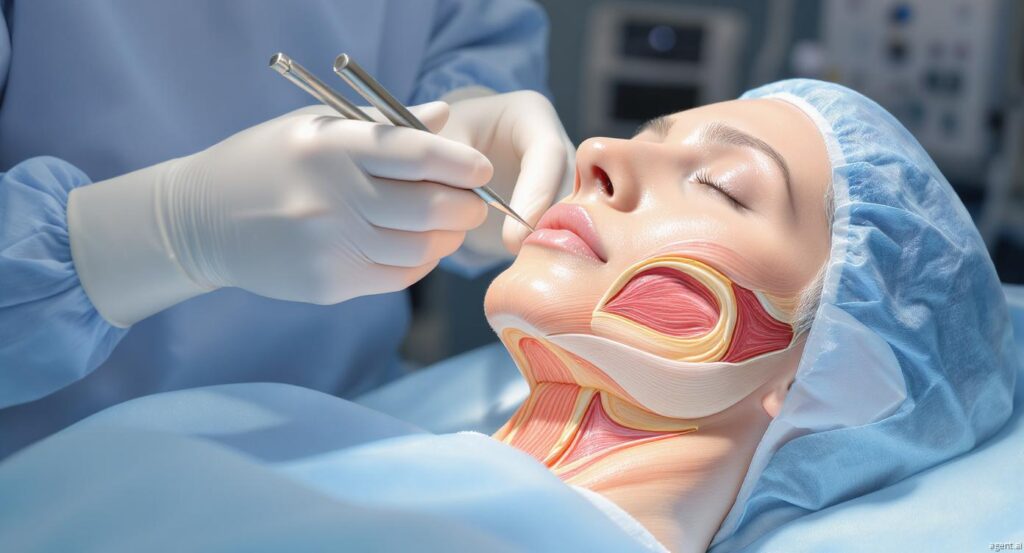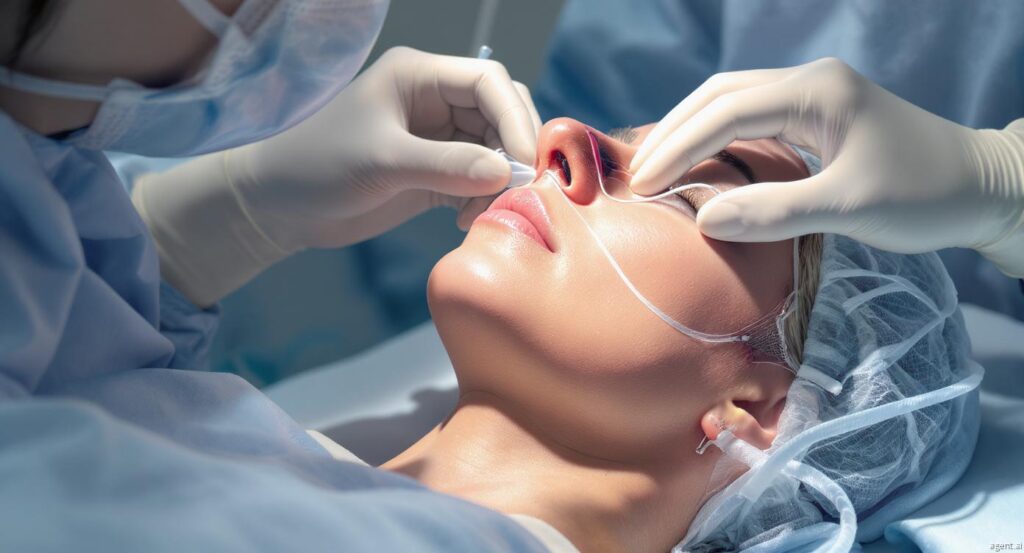It is not only the skin which undergoes aging, but deeper tissues, which essentially are the ones targeted by modern facelift methods, which are to be re-aligned to achieve the youthful form. The Deep Plane Facelift and the SMAS Facelift are two most developed procedures in the present times. Although these two types of surgery are effective, their technical procedure, outcome, and appropriateness vary significantly. In our endeavor to educate patients through Dr. Aakansha Vashistha, this article is a clear comparison that will guide you to make the best choice. As the need continues to rise for Plastic Surgery in Jaipur, the need to learn about how each method works only increases the necessity to determine what best fits your needs.
1- What Is the SMAS Facelift?
SMAS (Superficial Musculoaponeurotic System) Facelift is a procedure which focuses on the layer of tissues under the skin that provides expression to the faces and structural support. Rather than simply elevating the skin, it is a procedure that tightens and repositions the SMAS layer by using procedures like plication (folding) or SMASectomy (removal of a small strip). The SMAS facelift primarily addresses the shortcomings in the midface, the jowls, and the lower-face shapes. It is regarded as a safe, effective, and mid-depth form of facelift, and it is therefore the best choice of patients who have mild to moderate facial aging. Due to the lack of deep ligament release, the recovery process is likely to become easier and faster, and the natural, but average results are likely to be achieved.

2- Introduction to the Deep Plane Facelift?
Deep Plane Facelift is more anatomical and uses a less invasive approach as the SMAS and skin are lifted collectively which provides a more extreme and natural reposition of facial tissues. The surgeon incises deeper retaining ligaments (including zygomatic and masseteric ligaments) in this procedure, allowing much higher vertical cheek elevation and more correction of deeper folds (including nasolabial crease). This facelift goes all over the board to give complete enhancement at the mid face as well as the jawline and the neck. The results are extremely natural and long-lasting, however, the recovery might take a little bit longer, as the deeper structures have to be involved. It works best with patients who have severe facial sagging or loss.

3- SMAS vs. Deep Plane Facelift What the patient needs to know about the technical difference of these two types.
1. Surgical Depth
SMAS Facelift: Effects a superficial to mid-depth effect.
Deep Plane Facelift: This procedure is done below the SMAS and skin to touch deeper ligamental structures.
2. Tissue Movement & Release
SMAS Facelift: Moves tissues without a significant release of the ligament.
Deep Plane Facelift: This is a release of deeper ligaments, which provides more movement and lift.
3. Results in the Midface
SMAS: Sagging moderately improved.
Deep Plane: Excellent nasolabial folds and cheek drooping correction.
4. Neck Rejuvenation
SMAS: Aids in mild to moderate laxity.
Deep Plane: More suitable to high-level aging of the neck.
5. Skin Tension & Natural Natural appearance.
SMAS: There is a certain tension on the skin.
Deep Plane: Minimum skin tension to achieve ultra-natural.
6. Longevity of Results
SMAS: Typically 8–10 years.
Deep Plane: Often 12–15 years.
7. Ideal Candidates
SMAS: Early to moderate aging.
Deep Plane-There are extensive sagging or deep creases.
8. Procedure Time
SMAS: Reduction in the length of surgery.
Deep Plane: Prolonged because of detailed work.
9. Recovery Timeline
SMAS: Rapid primary recovery.
Deep Plane: Initially longer but deeper swelling effects.
10. Risk Profile
SMAS: Decreased technical complexity.
Deep Plane: It involves a very qualified plastic surgeon on the face.
4- Advantages of SMAS Facelift.
The SMAS facelift is a moderate advancement to patients that want to undergo a facelift but does not want to have a highly invasive procedure. It is useful in the treatment of jowls, early mid face sagging, and slight neck laxity. The SMAS facelift is one procedure that when done by an experienced surgeon provides a slight but significant revitalization of the face that brings a better definition of features without radically changing the existing features.

5- Advantages of Deep Plane Facelift.
The Deep Plane Facelift can be characterized by the fact that it yields one of the most natural and sustainable effects. It acts directly beneath the layer of the SMAS, and with the application of the technique, the cheeks can be lifted quite extensively, the deep lines softened, and the jawline and neck tightened, the source of all facial aging. The older adults are the biggest beneficiaries of the deep tissue repositioning since the fullness and structure are restored back to their youth. The transformational and lasting results are unparalleled though the recovery might be slow.
Last Words
A Deep Plane Facelift or a SMAS Facelift is a choice that is dependent on the level of aging, anticipated outcomes, and anatomic requirements. Both are good methods, and they are effective in the hands of a skilled surgeon, but the best method to use is determined by the patient. Dr. Aakansha Vashishtha offers quality advice and professional services, which make sure that you get natural, fresh, long term rejuvenation. The increasing confidence of Cosmetic Surgery in Jaipur has made the modern patients have access to more sophisticated ways of doing the facelift, which is safe and gives beautiful results.

